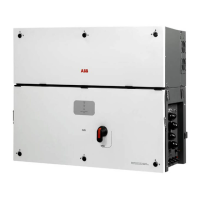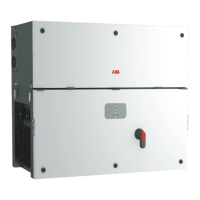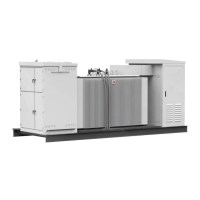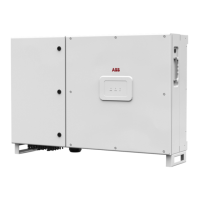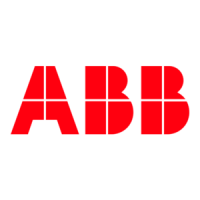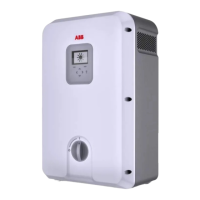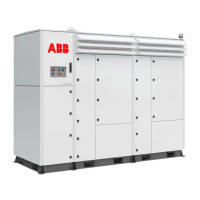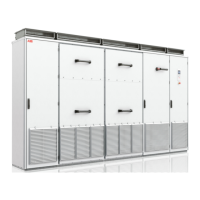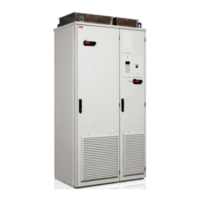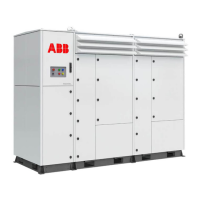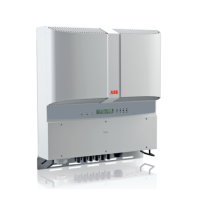Do you have a question about the ABB PVS-175-TL and is the answer not in the manual?
General safety instructions, symbols, electrical and thermal safety, and residual risks for inverter operation.
Explanation of symbols and signs used in the manual and on the equipment for hazard identification.
Safety guidelines for installation and maintenance operations, including environmental conditions and risks.
Specific warnings and precautions related to electrical hazards and thermal safety during operation.
Identification of residual risks that cannot be eliminated and suggested remedies for safe operation.
Details warranty conditions, coverage, and specifies items not included in the supply.
Defines the manual's purpose, structure, and the intended audience for its use.
Specifies the intended use, limits, and prohibited applications of the inverter.
Introduces the chapter on equipment characteristics and technical terminology.
Explains how to identify the equipment and manufacturer using labels and their details.
Describes the different inverter models, power modules, wiring boxes, and mounting brackets.
Lists and illustrates internal and external components with their corresponding reference numbers.
Provides detailed technical specifications for input, output, performance, communication, and environmental parameters.
Presents graphs and data showing inverter efficiency versus nominal power and MPP voltage.
Explains power reduction due to environmental conditions and input voltage variations.
Details the inverter's P-Q capability curves under different ambient temperature conditions.
Describes the structure of a PV generator, including cells, modules, strings, and arrays.
Explains the function of the string inverter in converting DC to AC power and feeding it to the grid.
Highlights inverter features, communication interfaces, and platform management.
Summarizes the internal structure and circuitry of the inverter, including DC/DC and DC/AC converters.
Details built-in safety devices like Anti-Islanding, ground fault protection, and surge arresters.
Guidelines for safe transport and handling of the inverter, protecting components from damage.
Lists the weight of the power module and wiring box for lifting and handling.
Specifies conditions and precautions for storing the equipment to prevent damage.
Outlines the procedure for safely unpacking and checking the equipment and its components.
Describes safe lifting procedures, required equipment, and necessary precautions.
Lists all components supplied with the inverter in the wiring box, power module, and bracket packages.
Lists recommended spare parts kits for installation, surge protection, connectors, and fans.
Critical safety warnings and instructions to follow before and during inverter installation.
Recommendations for choosing a suitable installation location, including distances and tilting limits.
Details the installation of IP65 covers to protect wiring box openings from environmental factors.
Step-by-step instructions for assembling the mounting bracket and attaching it to the support.
Describes how to lift and attach the wiring box and power module to the mounting bracket.
Explains how to open and secure the wiring box cover using the provided key tool.
Details final fastening steps, including junction screws and surge arrester plate rotation.
Explains how to open the power module cover using the key tool and cam locks.
Guides on connecting AC interface power cables, including phase identification and torque specifications.
Details how to connect interface signal connectors (male and female) for communication.
Explains the connection procedure for DC interface cables, including wrapping and passing them through openings.
Provides guidelines for proper cable routing to prevent water ingress and mechanical stress.
Instructions for connecting the inverter to the grid output, including grounding and protection.
Specifies requirements for installing an AC overcurrent protection device for the inverter.
Guidance on sizing and selecting appropriate AC line cables to prevent disconnections.
Explains how to route AC output and ground cables based on the AC panel version.
Steps to perform before connecting the PV generator, including ground connection and polarity checks.
Instructions for connecting DC input cables from the PV generator, including connector types and warnings.
Step-by-step procedure for installing and crimping DC quick-fit connectors.
Details on connecting DC strings to the inverter's MPPT input connectors, checking connector seals.
Procedure for safely disconnecting DC quick-fit connectors using a special tool.
Instructions for connecting communication and control signal cables to the communication board.
Explains how to connect signal cables to the communication board, including cable glands.
Details the procedure for establishing Ethernet connections for data transfer and monitoring.
Instructions for setting up RS485 serial communication in slave mode for monitoring.
Information on the secondary RS485 RJ45 connector for ABB service personnel use.
Instructions for setting up RS485 serial communication in master mode for accessory connection.
How to connect an external control for remote ON/OFF functionality via digital inputs.
Connecting devices to the inverter's multifunction relays for alarms and auxiliary functions.
Configuration for Demand Response Mode 0 as per AS/NZS 4777.2 standard using remote terminal block.
Emphasizes the importance of understanding instruments for proper operation and avoiding damage.
Explains the status indications provided by the POWER, ALARM, GFI, and WLAN/LAN LEDs.
Outlines the available user interfaces: ABB Installer APP, Integrated Web UI, and Aurora Vision Platform.
Discusses the inverter's measurement tolerances compared to certified measuring instruments.
General conditions for operating the equipment, emphasizing knowledge of instruments and functions.
Steps and procedures for commissioning the inverter, including checks and activation phases.
Instructions for commissioning the inverter using the ABB Installer mobile application.
Procedure for commissioning the inverter wirelessly via its Web User Interface.
Detailed explanation of the inverter's LED status indicators (Power, Alarm, GFI, WLAN/LAN) and their meanings.
Guides on how to access the inverter's Web User Interface via 'Station Mode' or 'AP Mode'.
Overview of the structure and sections within the Web User Interface (MAIN, SETTINGS, LOG, etc.).
Details the sub-menus within the MAIN section: DASHBOARD and STATUS SUMMARY.
Explains the SETTINGS menu for configuring Inverter Parameters (AC/DC, Power Control) and Digital Outputs.
Covers network connectivity settings including LAN, WLAN, RS485, DEBUG SETTINGS, and MODBUS.
Access to tools for firmware updates, connectivity checks, country standard, date/time, and resets.
Section for general information about the Web User Interface, including product info and release notes.
General conditions and warnings for performing maintenance, emphasizing qualified personnel and PPE.
Critical procedure for safely de-energizing the inverter before any maintenance work.
Required skills, qualifications, and legal compliance for personnel performing maintenance.
Specifies required Personal Protective Equipment (PPE) for inverter maintenance operations.
Lists essential safety equipment and tools required for performing interventions on the inverter.
Step-by-step procedure for safely de-energizing the inverter and ensuring safe access.
Recommended routine maintenance operations for long-term proper inverter operation.
Schedule for recommended replacement of components like external and internal fan sections.
Detailed procedure for replacing side, top, and internal fan sections of the inverter.
Instructions for replacing DC surge arrester cartridges when indicated by alarm or status.
Instructions for replacing AC surge arrester cartridges when indicated by alarm or status.
Procedure for replacing the MEMORY board on the communication and control board.
Procedure for replacing the RS485 line communication board due to communication issues.
Steps for replacing the CR2032 buffer battery on the communication and control board.
Instructions for safely dismantling the inverter, power module, wiring box, and mounting bracket.
Guidance for identifying and resolving common inverter problems, especially related to wireless communication.
Troubleshooting common issues with Web UI access and wireless network connectivity.
Lists and explains inverter alarm messages (Exxx, Wxxx) and their corresponding solutions.
Information on output power limitation messages that can be verified on the Web User Interface.
Procedure for obtaining security tokens and Admin Plus privileges via the ABB registration website.
How to check for ground leakage in the PV generator (DC side) using a voltmeter.
Procedure for measuring the PV generator's isolation resistance using a megohmmeter.
Guidelines for storing the equipment and proper dismantling, decommissioning, and disposal.
Lists network ports and services required for inverter communication and remote access.
Details IP network services necessary for inverter operation, including ports for SSH, DNS, HTTPS, DHCP, NTP, Modbus.
Lists network hosts the inverter connects to (e.g., Aurora Vision servers) and their configuration requirements.
Information on configuring the inverter's network settings: IP Address, Subnet Mask, Gateway, and DNS Server.
General safety instructions, symbols, electrical and thermal safety, and residual risks for inverter operation.
Explanation of symbols and signs used in the manual and on the equipment for hazard identification.
Safety guidelines for installation and maintenance operations, including environmental conditions and risks.
Specific warnings and precautions related to electrical hazards and thermal safety during operation.
Identification of residual risks that cannot be eliminated and suggested remedies for safe operation.
Details warranty conditions, coverage, and specifies items not included in the supply.
Defines the manual's purpose, structure, and the intended audience for its use.
Specifies the intended use, limits, and prohibited applications of the inverter.
Introduces the chapter on equipment characteristics and technical terminology.
Explains how to identify the equipment and manufacturer using labels and their details.
Describes the different inverter models, power modules, wiring boxes, and mounting brackets.
Lists and illustrates internal and external components with their corresponding reference numbers.
Provides detailed technical specifications for input, output, performance, communication, and environmental parameters.
Presents graphs and data showing inverter efficiency versus nominal power and MPP voltage.
Explains power reduction due to environmental conditions and input voltage variations.
Details the inverter's P-Q capability curves under different ambient temperature conditions.
Describes the structure of a PV generator, including cells, modules, strings, and arrays.
Explains the function of the string inverter in converting DC to AC power and feeding it to the grid.
Highlights inverter features, communication interfaces, and platform management.
Summarizes the internal structure and circuitry of the inverter, including DC/DC and DC/AC converters.
Details built-in safety devices like Anti-Islanding, ground fault protection, and surge arresters.
Guidelines for safe transport and handling of the inverter, protecting components from damage.
Lists the weight of the power module and wiring box for lifting and handling.
Specifies conditions and precautions for storing the equipment to prevent damage.
Outlines the procedure for safely unpacking and checking the equipment and its components.
Describes safe lifting procedures, required equipment, and necessary precautions.
Lists all components supplied with the inverter in the wiring box, power module, and bracket packages.
Lists recommended spare parts kits for installation, surge protection, connectors, and fans.
Critical safety warnings and instructions to follow before and during inverter installation.
Recommendations for choosing a suitable installation location, including distances and tilting limits.
Details the installation of IP65 covers to protect wiring box openings from environmental factors.
Step-by-step instructions for assembling the mounting bracket and attaching it to the support.
Describes how to lift and attach the wiring box and power module to the mounting bracket.
Explains how to open and secure the wiring box cover using the provided key tool.
Details final fastening steps, including junction screws and surge arrester plate rotation.
Explains how to open the power module cover using the key tool and cam locks.
Guides on connecting AC interface power cables, including phase identification and torque specifications.
Details how to connect interface signal connectors (male and female) for communication.
Explains the connection procedure for DC interface cables, including wrapping and passing them through openings.
Provides guidelines for proper cable routing to prevent water ingress and mechanical stress.
Instructions for connecting the inverter to the grid output, including grounding and protection.
Specifies requirements for installing an AC overcurrent protection device for the inverter.
Guidance on sizing and selecting appropriate AC line cables to prevent disconnections.
Explains how to route AC output and ground cables based on the AC panel version.
Steps to perform before connecting the PV generator, including ground connection and polarity checks.
Instructions for connecting DC input cables from the PV generator, including connector types and warnings.
Step-by-step procedure for installing and crimping DC quick-fit connectors.
Details on connecting DC strings to the inverter's MPPT input connectors, checking connector seals.
Procedure for safely disconnecting DC quick-fit connectors using a special tool.
Instructions for connecting communication and control signal cables to the communication board.
Explains how to connect signal cables to the communication board, including cable glands.
Details the procedure for establishing Ethernet connections for data transfer and monitoring.
Instructions for setting up RS485 serial communication in slave mode for monitoring.
Information on the secondary RS485 RJ45 connector for ABB service personnel use.
Instructions for setting up RS485 serial communication in master mode for accessory connection.
How to connect an external control for remote ON/OFF functionality via digital inputs.
Connecting devices to the inverter's multifunction relays for alarms and auxiliary functions.
Configuration for Demand Response Mode 0 as per AS/NZS 4777.2 standard using remote terminal block.
Emphasizes the importance of understanding instruments for proper operation and avoiding damage.
Explains the status indications provided by the POWER, ALARM, GFI, and WLAN/LAN LEDs.
Outlines the available user interfaces: ABB Installer APP, Integrated Web UI, and Aurora Vision Platform.
Discusses the inverter's measurement tolerances compared to certified measuring instruments.
General conditions for operating the equipment, emphasizing knowledge of instruments and functions.
Steps and procedures for commissioning the inverter, including checks and activation phases.
Instructions for commissioning the inverter using the ABB Installer mobile application.
Procedure for commissioning the inverter wirelessly via its Web User Interface.
Detailed explanation of the inverter's LED status indicators (Power, Alarm, GFI, WLAN/LAN) and their meanings.
Guides on how to access the inverter's Web User Interface via 'Station Mode' or 'AP Mode'.
Overview of the structure and sections within the Web User Interface (MAIN, SETTINGS, LOG, etc.).
Details the sub-menus within the MAIN section: DASHBOARD and STATUS SUMMARY.
Explains the SETTINGS menu for configuring Inverter Parameters (AC/DC, Power Control) and Digital Outputs.
Covers network connectivity settings including LAN, WLAN, RS485, DEBUG SETTINGS, and MODBUS.
Access to tools for firmware updates, connectivity checks, country standard, date/time, and resets.
Section for general information about the Web User Interface, including product info and release notes.
General conditions and warnings for performing maintenance, emphasizing qualified personnel and PPE.
Critical procedure for safely de-energizing the inverter before any maintenance work.
Required skills, qualifications, and legal compliance for personnel performing maintenance.
Specifies required Personal Protective Equipment (PPE) for inverter maintenance operations.
Lists essential safety equipment and tools required for performing interventions on the inverter.
Step-by-step procedure for safely de-energizing the inverter and ensuring safe access.
Recommended routine maintenance operations for long-term proper inverter operation.
Schedule for recommended replacement of components like external and internal fan sections.
Detailed procedure for replacing side, top, and internal fan sections of the inverter.
Instructions for replacing DC surge arrester cartridges when indicated by alarm or status.
Instructions for replacing AC surge arrester cartridges when indicated by alarm or status.
Procedure for replacing the MEMORY board on the communication and control board.
Procedure for replacing the RS485 line communication board due to communication issues.
Steps for replacing the CR2032 buffer battery on the communication and control board.
Instructions for safely dismantling the inverter, power module, wiring box, and mounting bracket.
Guidance for identifying and resolving common inverter problems, especially related to wireless communication.
Troubleshooting common issues with Web UI access and wireless network connectivity.
Lists and explains inverter alarm messages (Exxx, Wxxx) and their corresponding solutions.
Information on output power limitation messages that can be verified on the Web User Interface.
Procedure for obtaining security tokens and Admin Plus privileges via the ABB registration website.
How to check for ground leakage in the PV generator (DC side) using a voltmeter.
Procedure for measuring the PV generator's isolation resistance using a megohmmeter.
Guidelines for storing the equipment and proper dismantling, decommissioning, and disposal.
Lists network ports and services required for inverter communication and remote access.
Details IP network services necessary for inverter operation, including ports for SSH, DNS, HTTPS, DHCP, NTP, Modbus.
Lists network hosts the inverter connects to (e.g., Aurora Vision servers) and their configuration requirements.
Information on configuring the inverter's network settings: IP Address, Subnet Mask, Gateway, and DNS Server.
| Rated Output Power | 175 kW |
|---|---|
| AC Voltage | 400 V |
| MPPT Efficiency | 99.9% |
| Number of MPPTs | 2 |
| MPPT Trackers | 2 |
| Operating Temperature | -25 °C to +60 °C |
| Protection Degree | IP65 |
| Cooling Type | Forced Air |
| Ingress Protection | IP65 |
| Frequency Range | 50 Hz / 60 Hz |
| Cooling Method | Forced air |
